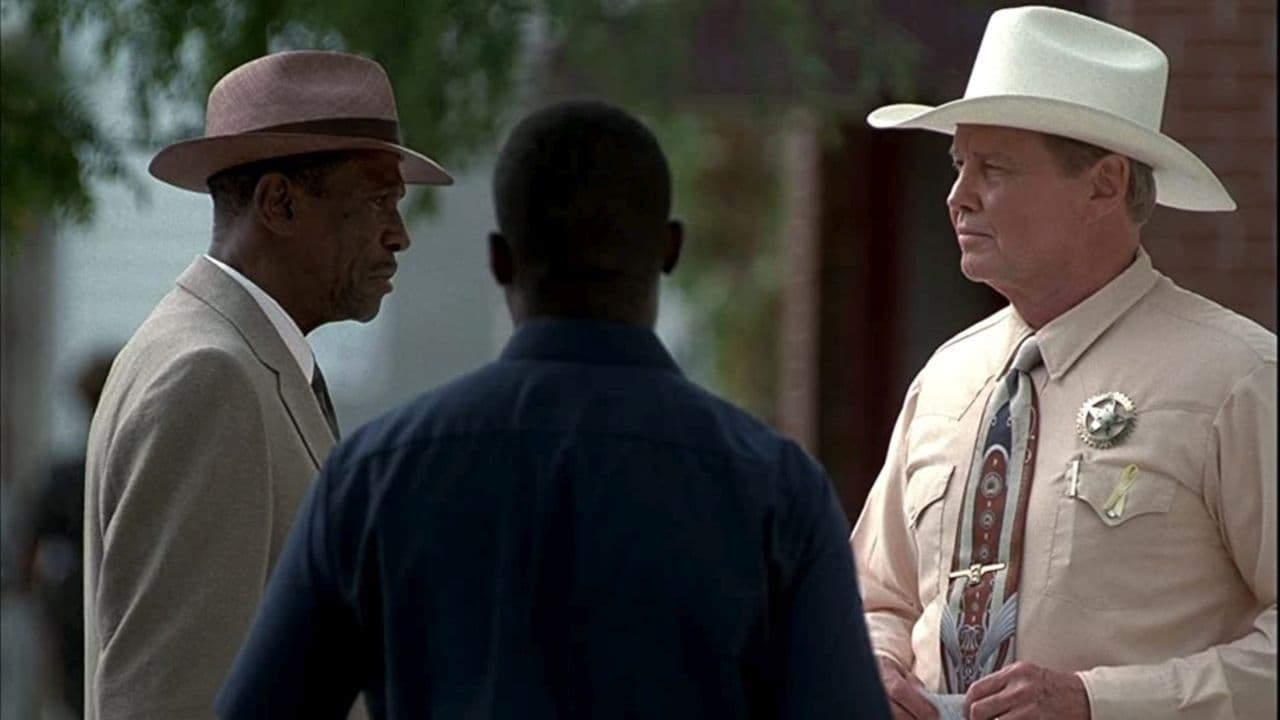

This is a kind of made for cable TV film that I can imagine was trailed every 15 minutes in the run up to its first showing. The shocking true story of the murder of James Byrd jr in 1998 when he was chained to the back of a pickup truck and dragged through the roads in Jasper, East Texas. Byrd was black and his murderers were three white men.Obviously this was a horrific crime, the drama is interspersed with news footage of politicians commenting on this even including President Bill Clinton.Jon Voight plays the considerate and wily Sheriff Billy Rowles who investigates the crime and finds the assailants rather quickly. Louis Gossett jr is the town mayor.However we get to know little about the victim. Its rather hinted from early scenes that he had been a bad boy in the past and in other scenes it was alleged that he was a drug dealer. We also do not find out why the young guys decided to commit such a crime.We see footage of the drag scenes in flashback, obviously the filmmakers decide to tread the line by not being too exploitative but there are some graphic scenes of the aftermath.The film turns to the examination of how the events caused waves to the town, where racism was hidden and the events brought the media as well as the Black Panthers and the Ku Klux Klan into the town and turn it into a powder keg. We also have the case reaching the court as the men stand trial.Yet this part of the story is rather uninteresting and perfunctory. Its very much highlights the flaws of these type of made for cable TV films. A shocking true event turned into a true movie of the week in a sanitized way. The budget is blown in getting the services of two Oscar winning actors but the production is sub par with lacklustre cinematography.
... View MoreA couple of weeks' ago I had watched this film on one of the True Movies channels. And I remember at the end of the film there was a passage that said something more or less like; "This was the first time a white man faced the death penalty for killing a black man since 1851 or some of year, I can't quite remember. And that at that time it was because a farmer had killed a slave of another farmer, and that it was no race issue but a property issue."It sickens me how those people back then just thought that black people were disposable commodities, or less than human. Another example is how when the US constitution was first established, it stated that a slave was considered three fifths of a man. Look up the Three Fifths Compromise to know what I'm referring to.
... View MoreI live in Jasper, Texas. I was born and raised here, and this was one inaccurate movie. I liked the cast of characters, but they definitely made the town look like a small hick town that is not current, and it is nothing like that. I thought that Jon Voight, and Louis Gossett Jr. gave great performances. I also didn't like the fact that they showed the dragging so violently. Many of us here were reminded of how horrible it was. It is behind us, and that is where we would like to keep it. Overall I did not enjoy this movie. I have seen it twice, and I really doubt that I will watch it again. I feel that many people would be greatly surprised if they ever came to Jasper. It is nothing like it is portrayed in this movie.
... View MoreAside from the Lifetime comparison this is a pretty decent dramatization of the terrible crime in Jasper. Really believable performances by both Jon Voight (with quite a believable Southern accent, similar to Bill Clinton's) and Louis Gossett, Jr. This would probably have been much more intense as a major motion picture theatrical release, but it's worth checking out as it is. In a couple of brief scenes, the film interjects real news clips of Bill Clinton and others speaking about the incident.
... View More